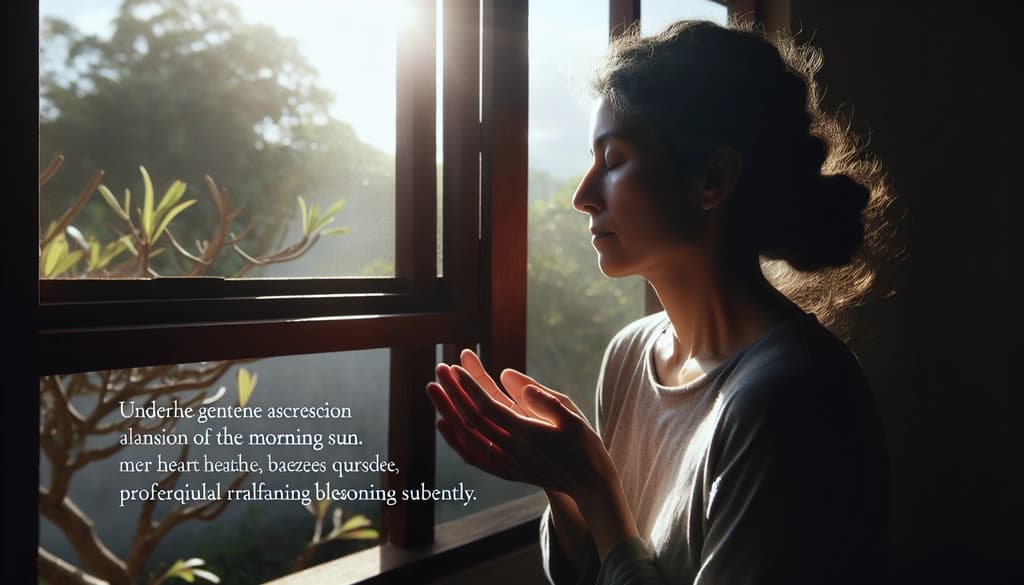How to Become Free Inside: Meeting Attachment, Suffering, and the Path of Surrender

The Subtle Longing for Freedom
There are moments when no outer circumstance—no success, affection, or distraction—can soothe the yearning for ease within our own being. To become free inside is not to escape life’s realities, but to discover a spaciousness within them. This freedom is not a distant prize, but the intimacy of meeting each moment as it is, with the heart unclenched.
Often, what clouds this inner space is the tightness of attachment—our fierce grip on what we crave, and our resistance to what discomforts us. Slowly, experience reveals that so much of our suffering sprouts not from life’s events, but from the thorns of our own holding on. If you’ve ever wondered why do we suffer, you may notice how attachment and desire shape your inner landscape.
Attachment as the Root of Suffering
Why do we suffer when we lose what we love, or when the world does not match our wishes? At the root is attachment: the mind’s habitual reaching, clinging, and bracing against uncertainty. Attachment whispers, “Without this, I am empty,” or, “If only that were different, then I would be at peace.” It is as though we tie our inner weather to outside tides—forever at the mercy of gain and loss, praise and blame.
The teachings of many contemplative traditions echo the same gentle insight: When we see attachment as the root of suffering, we do not need to condemn ourselves, but to become curious. The grip of attachment, though painful, is also a call—to inquire what truly endures, what softens when we let go, even a little. Understanding the meaning of dukkha helps illuminate how recognizing suffering’s origins becomes the first step in the process of release.
As the Buddha outlined in the four noble truths explained, attachment and desire are woven into the very fabric of our difficulties, but the path of freedom also lies within our reach.
Spiritual Growth Through Difficulty
What if difficulty itself is a turning point towards freedom inside? In the press of grief, tension, or longing, something secret stirs—an invitation not to bypass pain, but to grow roots in the heart of it. Spiritual growth often happens not despite hardship, but through it.
You might notice, in the tightest moments, a longing to surrender: to yield your exhausting patterns, to give up the struggle to control what cannot be controlled. In these times, spiritual growth is not triumph over difficulty, but the quiet practice of becoming tenderly available to it. Some teachings call this moksha: a liberation that blossoms right in the heart of challenge.
How to Practice Surrender
Surrender is not defeat; it is the art of unbinding yourself from the illusion of total control. It begins softly: a willingness to pause instead of react, to breathe into discomfort, to sense the body as it contracts around attachment—and to ask, gently, “Could I let this be, just for now?”
You might try this: As a difficult feeling arises, feel your feet on the earth. Inhale and notice where tension gathers. With exhale, imagine a softening, a loosening of your mental fist around what you want or resist. Let the breath move through you like wind through grass—reminding you that you are vast enough to hold it all.
If the mind returns to clinging—know that you have not failed. Surrender is a practice, renewed moment by moment. Over time, you may begin letting go of attachment not by force, but through acceptance, patience, and trust.
He sat in the deep swirl of fear and not-knowing, his hands curled, then opening, as if releasing invisible pebbles into a stream. Nothing outside him changed—yet inside, he felt the first clear notes of freedom, like a bell echoing in gentle, empty air.
Living Freedom: The Subtle Power of Letting Go
When you discover even a thread of freedom inside, daily life itself begins to shift. Not all struggle evaporates, but your relationship to longing, resentment, or grief grows spacious. You respond more than you react. Small, surrendered moments—letting a harsh word pass without answering back, meeting failure with self-kindness—open up a different kind of power.
Science hints at what contemplatives have always known: releasing attachment lowers anxiety, improves well-being, and softens the inner friction between what is and what we wish. If you’d like to understand the desire and suffering connection, look gently at your moments of clinging. Each bit of awareness brings spaciousness; each act of letting go, however small, is a gesture toward freedom.
Inner freedom also gently points to the possibility that suffering, though it may feel personal and perpetual, can be eased over time. For more reflections, explore how to end suffering through mindful, compassionate presence.
Trusting the Path: Returning to Inner Freedom
You do not have to uproot all attachment before you can taste freedom. Each breath offers renewal. Each pause is a doorway. May you allow yourself to meet each wave of clinging and release, suffering and growth, with gentle curiosity. May you come to trust that freedom inside is not something you must perfect, but a home you can always return to—simply by letting go, and letting be.
